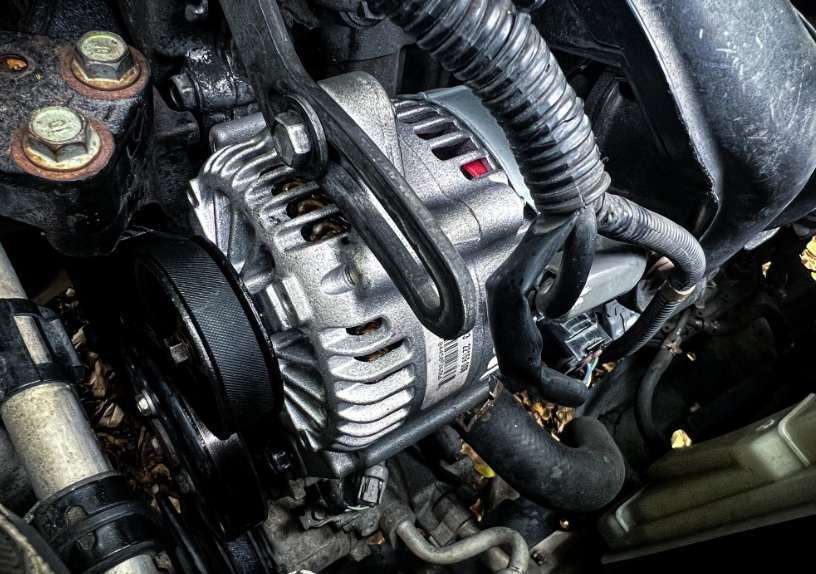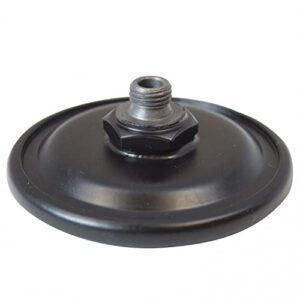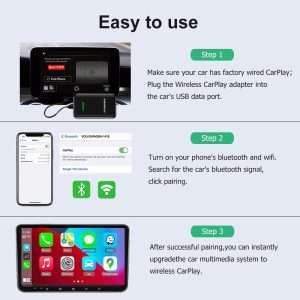If your Ford Escape won’t start after getting gas, it could be due to a variety of issues such as a faulty fuel pump, clogged fuel filter, or vapor lock. These issues may prevent proper fuel flow and combustion, resulting in starting issues after refueling.
It’s essential to get your car inspected by a professional mechanic to diagnose and fix the problem effectively. Experiencing starting problems with your Ford Escape after refueling can be frustrating and inconvenient.
Table of Contents
Whether it’s a faulty fuel pump, clogged fuel filter, or vapor lock causing the issue, understanding the potential reasons behind this problem is crucial.
We’ll explore the common reasons why your Ford Escape won’t start after getting gas and provide some tips on how to address these issues effectively.

Fuel System Issues
Experiencing difficulties in starting your Ford Escape after refueling can be frustrating. Several fuel system issues could be the culprits behind this problem.
Understanding the potential issues can help you diagnose and resolve the problem effectively.
Corrosion In Fuel Tank
If your Ford Escape won’t start after refueling, one possible cause could be corrosion in the fuel tank. Corrosion can occur due to prolonged exposure to moisture and contaminants in the fuel.
This can lead to fuel pump and injectors malfunctions, impacting the vehicle’s ability to start properly after refueling.
Clogged Fuel Filter
Another potential culprit for your Ford Escape’s starting issues after refueling is a clogged fuel filter.
Over time, the fuel filter can become clogged with debris, dirt, and sediment, restricting the flow of fuel to the engine.
As a result, the engine may struggle to start, especially after refueling when a fresh batch of fuel passes through the clogged filter.
Electrical System Check
The electrical system check is crucial when troubleshooting a Ford Escape that won’t start after getting gas.
This step involves inspecting various components such as the battery and ignition system to identify potential issues. Here’s a breakdown of common electrical system problems that can cause starting issues in a Ford Escape.
Battery Issues
When experiencing starting problems after refueling, the battery should be one of the first components to inspect. Old or worn-out batteries may struggle to hold a charge, leading to starting issues.
Additionally, loose or corroded battery terminals can result in poor electrical connectivity, causing the vehicle to fail to start.
By conducting a voltage test or checking the battery health using a multimeter, you can determine if the battery is the culprit behind the starting problem.
Ignition System Problems
Another potential cause for a Ford Escape’s failure to start after refueling is ignition system issues.
This can include faulty ignition coils, defective spark plugs, or a malfunctioning ignition switch. These issues can lead to the engine’s inability to ignite the fuel, causing starting problems.
Inspecting the ignition system components and conducting diagnostic tests can help pinpoint any faults that may be hindering the starting process.
Evaporative Emission Control System (EVAP)
The Evaporative Emission Control System (EVAP) is a crucial component of your Ford Escape’s fuel system, responsible for managing vapor emissions and preventing fuel vapors from escaping into the atmosphere.
When your Ford Escape won’t start after getting gas, issues with the EVAP system could be the culprit. Here, we explore two common EVAP-related problems that can lead to starting issues.
Faulty Evap Purge Valve
A faulty EVAP purge valve can cause starting problems after refueling. This valve is responsible for controlling the flow of fuel vapor from the EVAP canister to the engine.
When the purge valve malfunctions, it may not open or close properly, leading to an imbalance in the fuel-air mixture and causing start-up issues.
Evap Canister Issues
The EVAP canister, also known as the charcoal canister, captures and stores fuel vapors to prevent them from escaping into the atmosphere.
Over time, the canister can become clogged with fuel residue or develop cracks, causing it to malfunction. When the EVAP canister is compromised, it can lead to difficulties starting your Ford Escape after refueling.
Diagnosis And Testing
When your Ford Escape won’t start after refueling, it can be frustrating and inconvenient.
However, with the right diagnosis and testing, you can identify the underlying issues and take the necessary steps to resolve them. Here are some crucial methods for diagnosing and testing the problem.
On-board Diagnostics (OBD) System
The OBD system in your Ford Escape is a vital tool for diagnosing issues related to the engine and emissions systems.
When the car won’t start after refueling, the OBD system can provide valuable error codes that indicate potential problems, such as fuel system issues or evaporative emissions leaks.
Fuel Pressure Testing
Fuel pressure testing is essential in determining if there are any issues with the fuel delivery system that could be causing the starting problem after refueling.
By connecting a fuel pressure gauge to the Schrader valve on the fuel rail, the technician can measure the pressure and ensure it falls within the manufacturer’s specifications.
A significant drop in fuel pressure after refueling could indicate a faulty fuel pump or a clogged fuel filter.
Professional Assistance
If your Ford Escape won’t start after getting gas, it’s crucial to consider seeking professional assistance to diagnose and resolve the issue effectively.
Complex start-up problems can be frustrating and often require the expertise of a qualified mechanic.
Understanding when to seek mechanic help and how to deal with complex start-up problems can make a significant difference in resolving the issue promptly.
When To Seek Mechanic Help
When experiencing persistent starting issues after refueling, it’s essential to seek mechanic help if the problem persists after troubleshooting basic causes.
Whether it’s a fuel delivery issue, ignition system malfunction, or a more complex electrical problem, a skilled mechanic can perform diagnostic tests to identify the root cause and implement the necessary repairs.
Ignoring recurring starting problems can lead to further damage and inconvenience, so seeking professional assistance is key to addressing the issue effectively.
Dealing With Complex Start-up Problems
Complex start-up problems may require advanced diagnostic equipment and specialized knowledge to diagnose and resolve.
When basic troubleshooting methods don’t resolve the issue, it’s crucial to consult a mechanic experienced in Ford Escape models. They can effectively diagnose complex start-up issues related to fuel systems, ignition components, or electrical malfunctions.
Addressing these complexities promptly with professional assistance can prevent further complications and ensure the reliable performance of your vehicle.
Frequently Asked Questions Of Ford Escape Won’t Start After Getting Gas
Why Does My Ford Escape Not Start After Getting Gas?
After getting gas, the fuel system may experience vapor lock or fuel pump issues, leading to difficulty starting the car. It’s essential to ensure the gas cap is securely fastened to prevent air from entering the fuel system, and the fuel pump is functioning correctly.
What Are Common Reasons For A Ford Escape Not Starting After Refueling?
Common reasons include a faulty fuel pump, vapor lock, clogged fuel filter, or issues with the spark plugs. It’s crucial to have the vehicle inspected by a professional mechanic to diagnose the exact cause and address it promptly.
How Can I Prevent My Ford Escape From Experiencing Starting Issues After Refueling?
To prevent starting issues, ensure the gas cap is tightly secured after refueling, maintain regular fuel system maintenance, and avoid overfilling the tank, which can lead to charcoal canister issues. Additionally, using high-quality fuel and additives can help maintain the fuel system’s efficiency.
Conclusion
If your Ford Escape won’t start after filling up with gas, don’t panic. Check the fuel system for issues and seek professional help if needed.
Remember to stay informed about common problems and solutions for smooth driving experiences.
By addressing these issues timely, you can ensure a reliable and safe vehicle for your daily commute.




